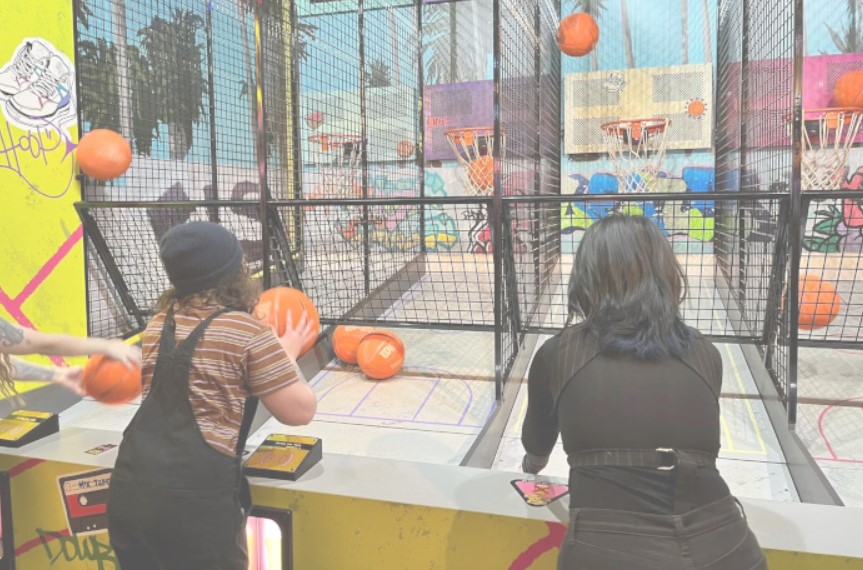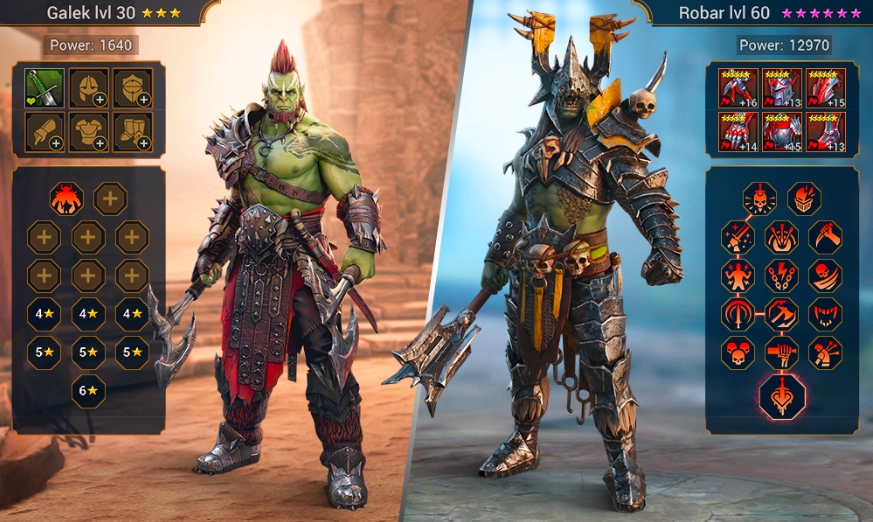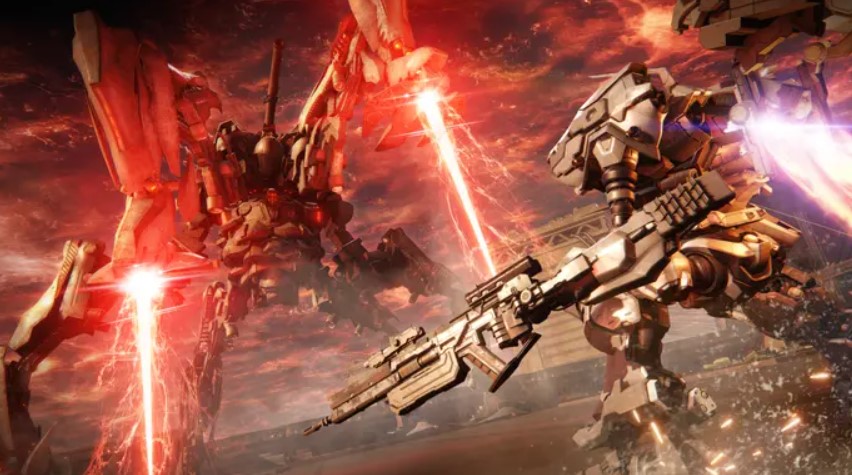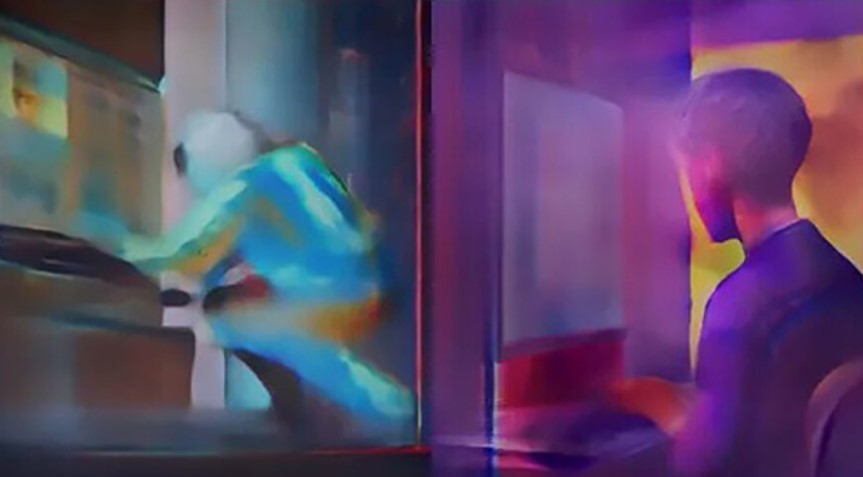
For decades, game development has been done in groups sharing a physical space. How we interact is inscribed in our psyches and, to some extent, defined by the physical spaces in which we live. This can be seen in the fact that weird, wonderful and playful office designs are commonplace in the games industry. After offices were closed due to the COVID-19 pandemic , some companies are trying or mandating their employees to return to the office, as Activision Blizzard did earlier
this year . But will it work? Can it eliminate the late deliveries and occasional productivity losses attributed to a distributed workforce? The data contradicts that, with Fortune reporting that ‘with office closures [due to the pandemic], US productivity surged in the second quarter of 2020 and remains high in 2021’ was maintained,” he reported. The decline in productivity that followed coincided with many people returning to office work. These discussions brought me back to the vision of nDreams Elevation. We believe that fully “virtual” teams can effectively develop creativity and output without compromising collaboration, quality, efficiency, etc. Here’s how we’re trying to establish this in our studio, and some approaches that we think you’ll find helpful.
Don’t recreate your office virtually
Establishing a full remote studio is an opportunity you should definitely seize. To do that, it’s essential to think hard about what you want to achieve and analyze the process of achieving that goal, both positive and negative.
Take meetings for example. This can be a divisive, calendar-eating waste of time if handled incorrectly. What is a meeting in the first place? Broadly speaking, it’s the gathering of people in a shared space to discuss a particular topic. For years, this shared space has been the physical thing: the conference room, around which the very concept of the meeting has been formed.
Most of the time it works, but only some people are invited to the meeting, which can create blind spots or cause people to miss important information. It is also inherently time bound. In other words, people in the shared space at the appointed time participate in the conversation, and people outside the walls do not participate in the conversation.
The quintessential online meeting, as defined by many companies, is a legacy of this, recreating rigid social structures and boundaries in virtual space, but I don’t see any reason for this.
Undoing years of training and entrenched behavior isn’t easy, but the steps below are a good starting point.
clarify the vision
Successful teams have a clear goal of what they’re working for each day, and so do teams that work remotely. Rather, more focus is required in this area.
First and foremost, write down your key priorities that have a meaningful impact on how you work. A vision that should be shared should emerge.
This basically refers to a very clear and concise studio goal, a concrete mission with all the ‘what’ and ‘why’ spelled out. It’s a haven and north star in a studio prone to indecision.
”We make great games” may be a fine aspiration, but it’s not a statement your team members can leverage when they need guidance. This statement must stand the test of time. And it’s important to establish it in a way that everyone can understand, as early as possible.
Just specifying what the terms mean gives the vision enough weight and authority to guide the whole team.
Successful teams have a clear goal of what they’re working for each day, and so do teams that work remotely. Rather, more focus is required in this area.
When all team members, from top to bottom, don’t understand the ‘why’, production is interrupted by those seeking more clarity, and chaos and uncertainty leave members lethargic Sometimes. With a clear vision, people are empowered to decide what’s good and what’s bad for a project, many traditional meetings are unnecessary, and production is downtime can be reduced. .
Consider strategies to avoid team member dependence expecting direction. Our team does not have a game director role for this reason, demonstrating our commitment to giving the team the authority and responsibility to contribute to innovation, discovery and vision.
”Evidence in the software” should be a key indicator of what’s working and what’s not working within the team. And everyone at the studio needs to be confident that the vision is understood enough to play the latest builds of the game regularly and critically to recognize the presence or absence of evidence.
Every studio will have its own vision and how to make it happen. The key is to establish the “what” and “why” and explain it to all team members to keep the vision alive.
Make knowledge accessible and permanent
Introducing virtual tools and maintaining channels of information and collaboration will be a game changer. We use a combination of Miro and Microsoft Teams to ensure fluid communication and team transparency, but there are countless other options, including yours. may already use some.
Miro is an online whiteboard tool, suitable for creative collaboration and planning. When used in a disciplined and consistent manner and with diligent updating by all team members, the whole team has transparent access to real-time development information and updates. Consensus statements and ideas are forever public, and everyone is notified of progress.
It’s effectively the opposite of a meeting, where ideas can be shared and engaged even when you’re not in the conversation.
Microsoft Teams is an ideal companion for Miro, as it allows you to run 24/7 joinable and unjoinable channels by role (other software such as Discord and Slack can do the same, but the point is that how to use it).
In general, it’s a good idea to have one application for project documents and work in progress, and another for ad-hoc discussions.
The two applications cover all aspects of team information and communication, including ideation, discussion, feedback, coaching, reviews, and studio atmosphere. This pairing is integral to almost every aspect of our collaboration process, and if collaboration is truly valued, all team members should be given access to all channels.
When everything is open, decisions are explained and understood on the spot, in a visible way.
This approach has scalability that is not possible with collaborative work in a typical office space, and requires each person to be in a place of knowledge. Everyone on the team will be in the right place to act on their own initiative, manage their time, and collaborate effectively. When everything is open, decisions are explained and understood on the spot, in a visible way. Also, meeting schedules are unnecessary.
You need discipline to succeed. If a conversation starts in the wrong place, it has to be moved. Also, since feedback is open, senior members should keep the review format clear and concise. You wouldn’t go to a separate room to review with a small group of select people. Feedback takes place in channels that all team members can participate in, and the results and next steps should be understood and documented.
Senior members with office experience may struggle to adapt. Junior members, however, should be drawn more naturally. It takes a bit of time to change mindsets, but the organic benefits are great, like mentorship, impromptu workshops, and studio camaraderie.
Give team members access to journeys
An open system inevitably changes the demands of all team members. Regardless of your rank, you are obligated to give your honest opinion to the entire team.
This doesn’t mean making games in committees or democratizing development, expertise and experience are important and can never be taken lightly. But it’s also important that everyone has their own opinion and agrees on the path forward during the sprint planning stage and beyond.
At key points in project development (at the end of the sprint in our case), consider giving the whole team the opportunity to vote on the most important issues facing the latest build. If you follow step 2 and instill confidence in your vision across your team, the results will be strong.
Make sure that the most frequently raised issues are addressed in the next development phase. Once there’s some degree of consensus about what the problem is, it’s fairly easy to motivate the team to come up with a solution together.
Any idea or request should be actively encouraged to be seriously questioned by other members of the team without regard to hierarchy.
Of course, not everyone immediately agrees on that solution. Any idea or request should be actively encouraged to be seriously questioned by other members of the team without regard to hierarchy. For that to work meaningfully, it’s also important to provide opportunities for safe feedback in a variety of ways, such as submitting notes written on the Miro board. No one wants to speak in a crowd, no matter how welcome they are.
This process has many advantages. Seniors are forced to not only learn the team’s attitude, but also potentially scrutinize it with more worked out ideas. Junior members can grow by getting opportunities to learn. And above all, you can be sure that all parties are in perfect alignment with regard to responsibilities, approaches and deadlines.
The key is to thoroughly clean out any concerns or questions before proceeding with development so that everyone on the team can move forward with clarity and focus. This will lead to less rework, more consistency, and greater results in the right direction.
protect the team
You’ve probably heard and heard that remote workers are more likely to be isolated or stressed out than office workers. The word “remote” just means being disconnected from other people, so we used the term “virtual” to describe the studio to fit our image.
In the virtual studio, it is necessary to be very conscious of grasping the health status of the team. Personal stress may not be noticeable, but quietly resigning while seemingly satisfied with the job is a scenario that should be avoided at all costs.
First, it is important to plan work that can be completed to a high standard within working hours. It may seem easy, but we all know it’s not always so.
Don’t let teams or individuals fail. It’s a good idea to discuss with your team how achievable your development goals are and formally decide how you’ll listen to them in setting goals.
Based on my experience with goal setting, I would recommend using Miro’s Fibonacci Scale feature to have the whole team vote on how achievable each goal is and what the quality is.
In doing so, you can gain different perspectives, fill in blind spots, educate others about unexpected complexities, and bridge knowledge gaps between disciplines. Over time, you should see a pattern where people agree on whether things are complicated. This indicates that alignment within the team is being established and means that individuals are significantly less likely to suffer in silence.
Don’t let teams or individuals fail.
It’s a good idea to discuss with your team how achievable your development goals are and formally decide how you’ll listen to them in setting goals.
On the subject of communication, you also have the option of reducing the number of communication channels to get your team talking more. It may be counter-intuitive, but having fewer channels makes each person more likely to engage on a deeper level and be more sociable, as if they were sharing a physical space.
What we have long known as a working model is now being called into question. One of them is the concept and structure of the office. There are many reasons to choose a virtual studio over a physical studio, such as talent acquisition and (for many people) the comfort of working from home, but most do so without giving due consideration to how things are different. has no meaning.
There’s an opportunity to question everything, including the ones we’ve taken for granted for so long, like the concept of a “meeting.”
Of course, this doesn’t apply to all teams, and each team has its own way of working within nDream, but we already believe this is the structure that works across the industry. I’ve seen enough.
The key message is that since there is no classic physical structure, we can’t simply replicate known models. First and foremost, invest the time and effort into clarifying what you want to achieve. Experiment with what works best for your team and project.
As we all learn more about what works and what doesn’t in this (relatively) new world, we can make the industry better for everyone.
Glenn Brace is the head of studio at nDreams Elevation and was previously art director at Climax Studios. Founded in January 2022, Elevation is a fully remote studio focused on creating AAA and core VR gaming experiences.





